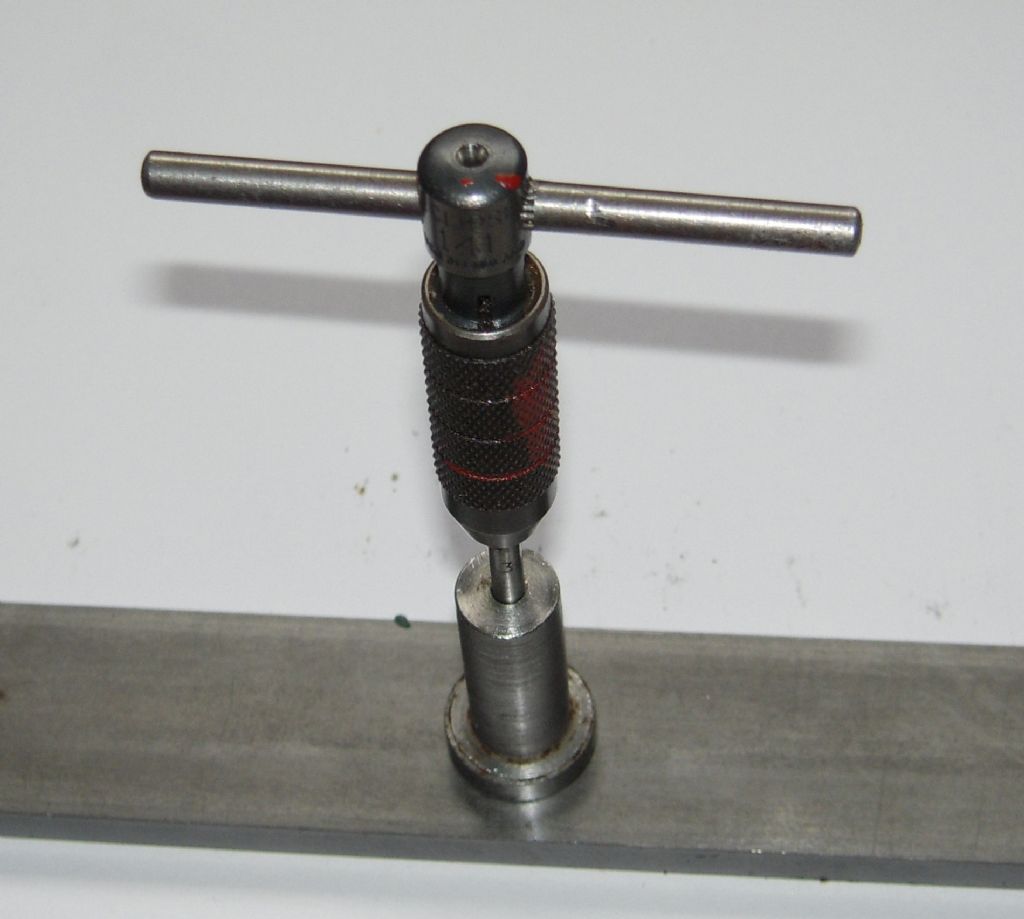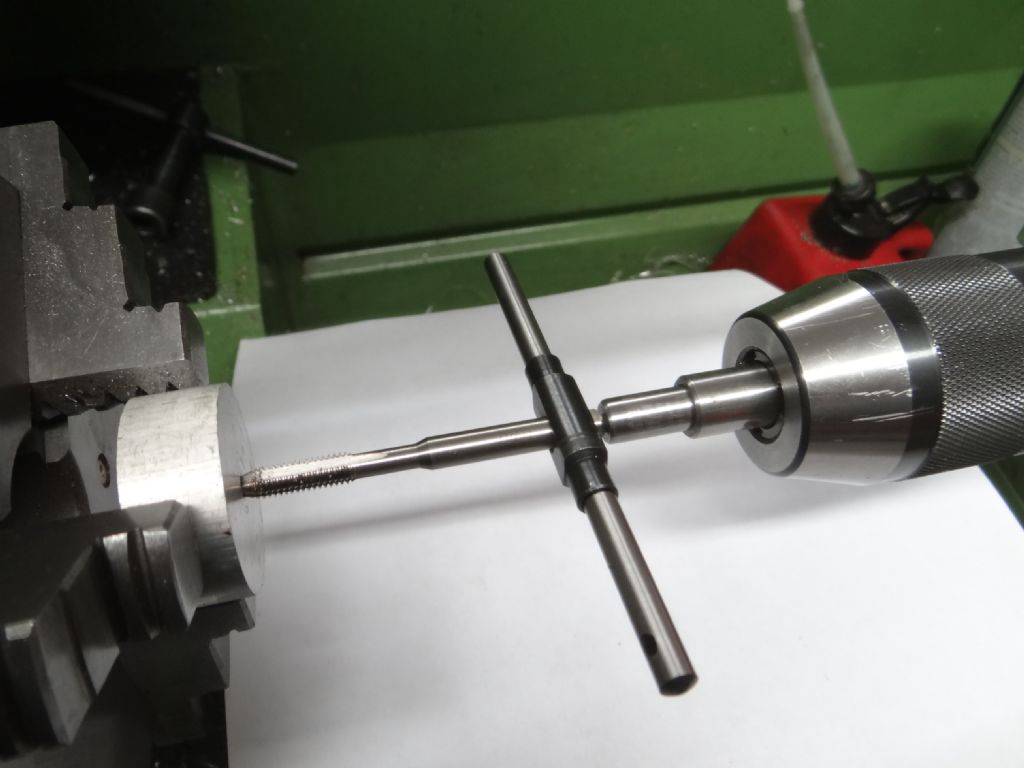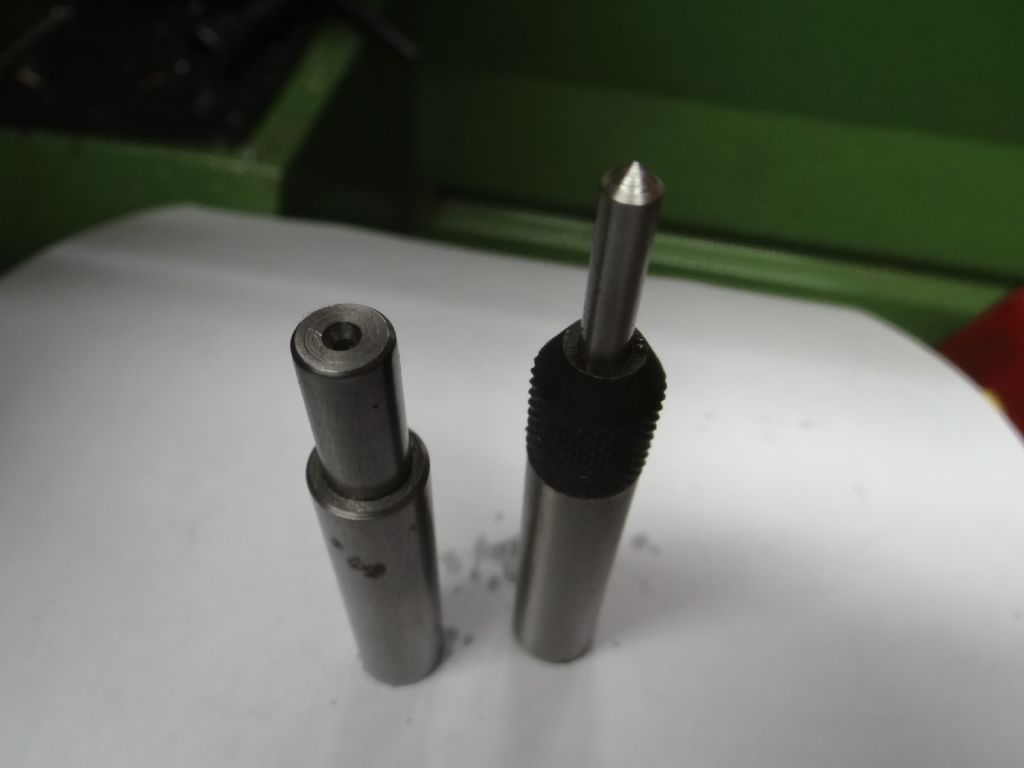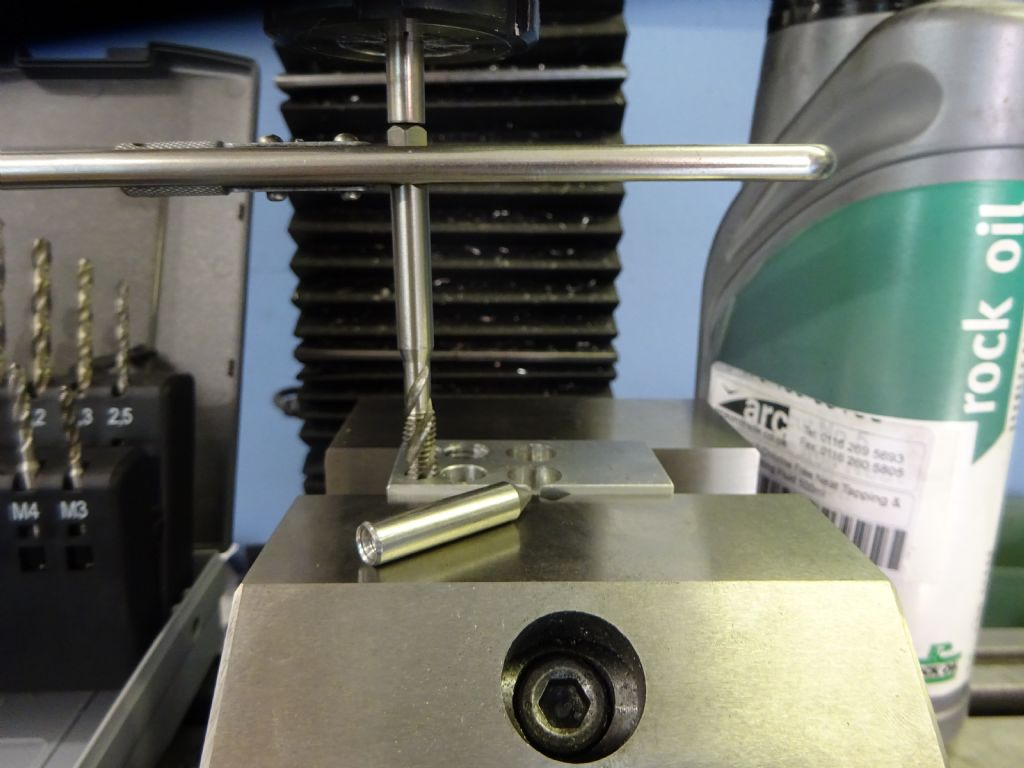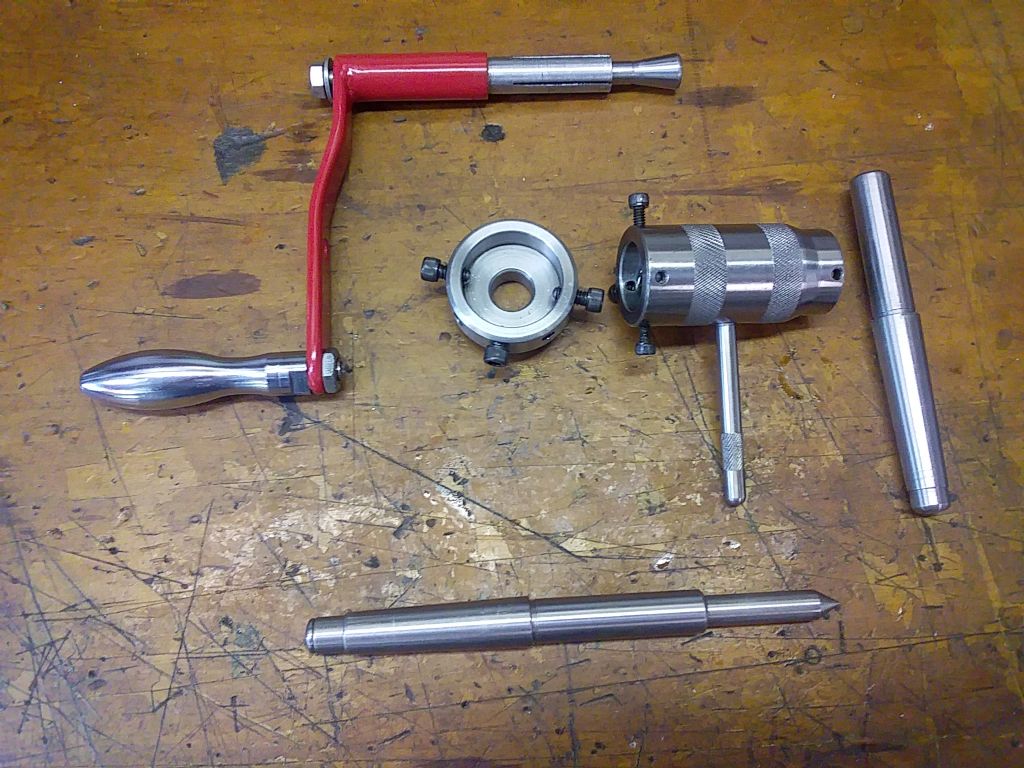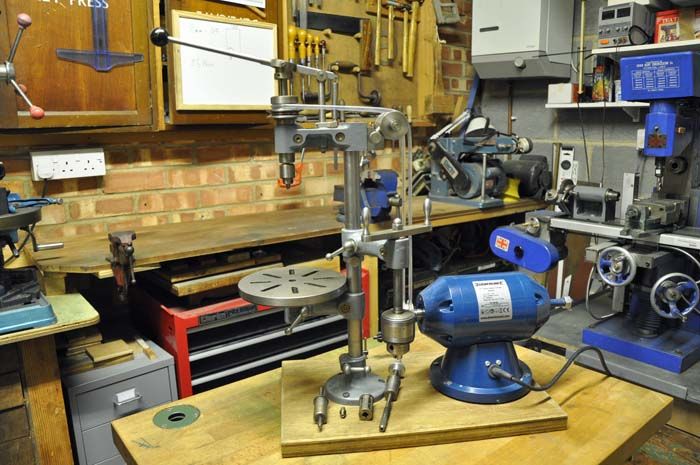I use the tapping block method a lot, especially with small taps. For motorbike sized 1/4 and 5/16" etc diameter threads, it is a block of steel 1" thick with holes drilled in it at each tap size.
For the tiny stuff, like model engines using 1.5mm diameter threads etc for stud holes, I have cut a few small pieces of key steel about 10 or 12mm square and maybe 20 to 40mm long and drilled one hole in each to guide either 1mm, 1.5mm 0r 2mm etc taps. They work really well on the small model stuff.
On rufty tufty Harley Fergusson sized stuff using 5/16" and upward taps I will often drill the hole in the drill press than hold the tap in chuck and hit the start button, then the stop button and bring the quill down to "bury" the tap into the hole while it is still spinning. Usually goes in a couple of turns, which is enough to set it straight. I can then finish it off in the vice. (Drill press vice must be bolted down for this one of course!)
Another way, the official way apprentices used to be taught, is to hold the job flat and square in the vice and use a small try square to check progress from two directions as you go. Once you get started, a quick sight to line the tap up with a door frame or window frame etc in the distance behind it is a quick check.
Spring centre for the lathe and drill press as described by above posters is brilliant too.
Edited By Hopper on 24/03/2022 10:23:17
Edited By Hopper on 24/03/2022 10:24:00
Bob Unitt 1.


